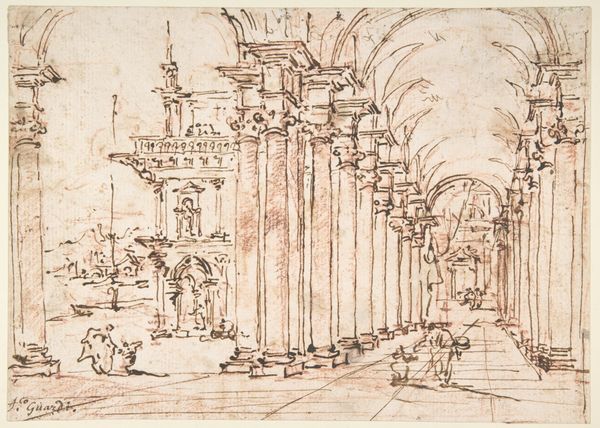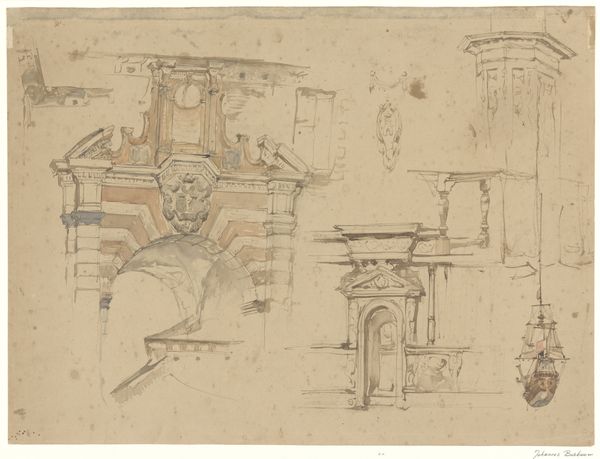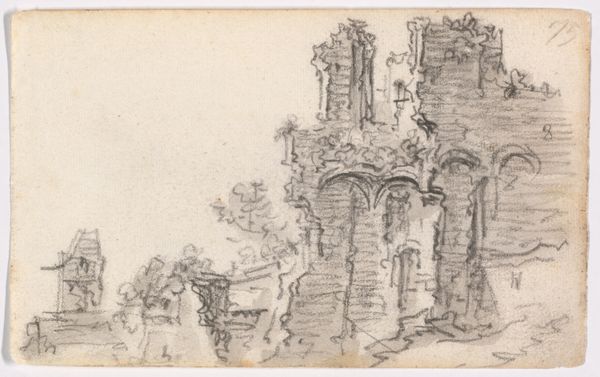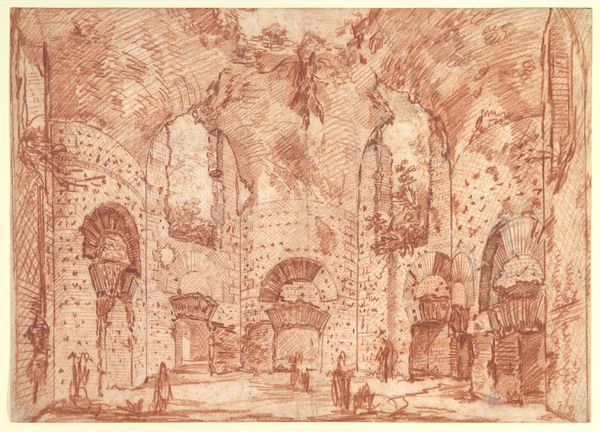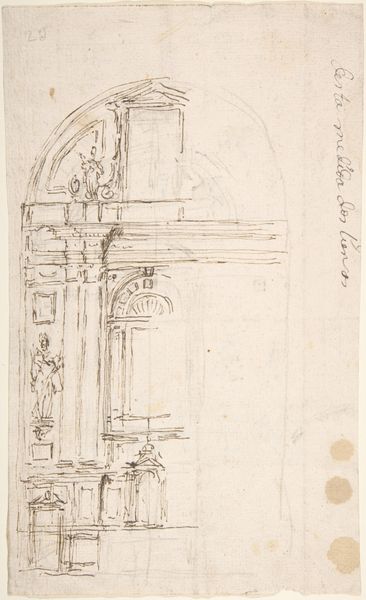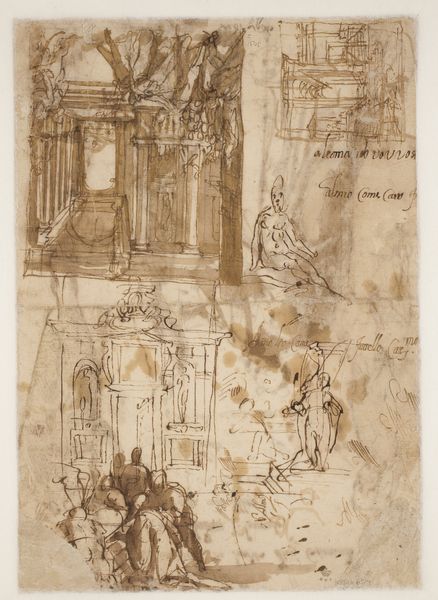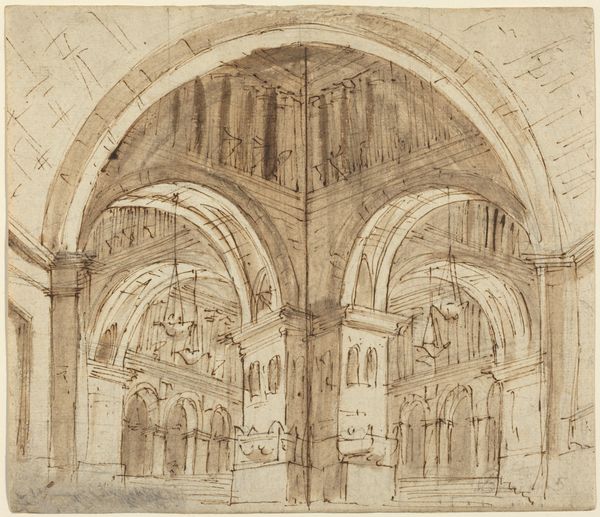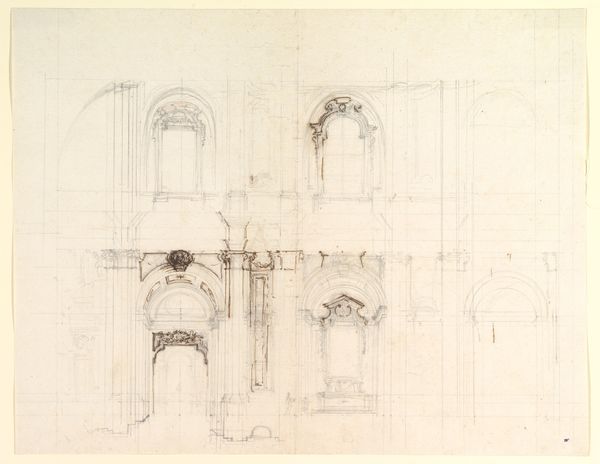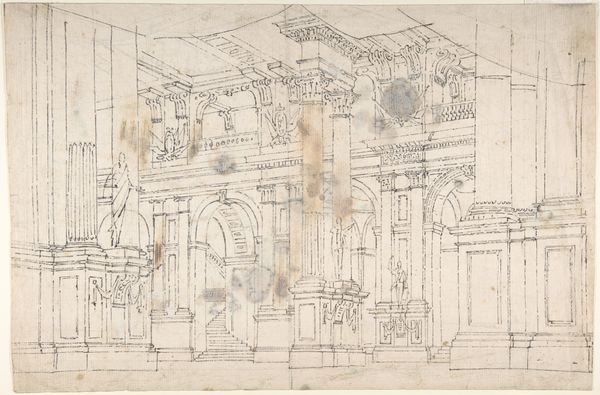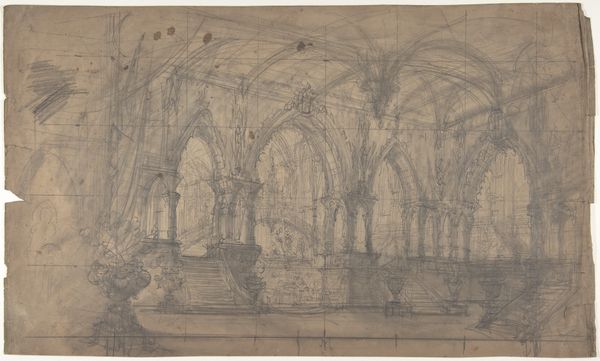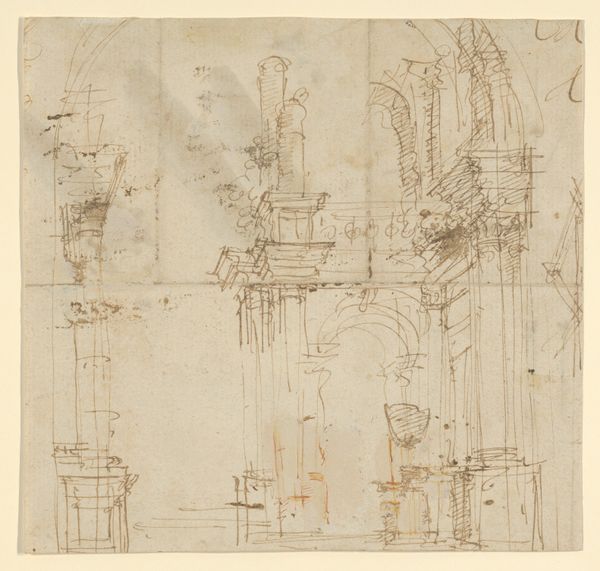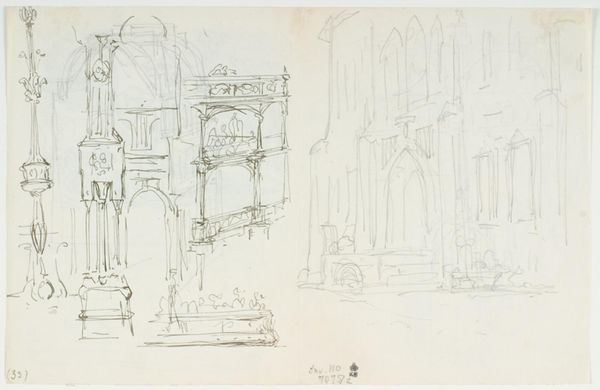![Designs for Palatial Staircases [recto] by Lorenzo Sacchetti](/_next/image?url=https%3A%2F%2Fd2w8kbdekdi1gv.cloudfront.net%2FeyJidWNrZXQiOiAiYXJ0ZXJhLWltYWdlcy1idWNrZXQiLCAia2V5IjogImFydHdvcmtzLzc4ZjYyNGJhLWE0ZGMtNGI4Ni1iMmJmLWMzMmUzNzRjNmQ0MC83OGY2MjRiYS1hNGRjLTRiODYtYjJiZi1jMzJlMzc0YzZkNDBfZnVsbC5qcGciLCAiZWRpdHMiOiB7InJlc2l6ZSI6IHsid2lkdGgiOiAxOTIwLCAiaGVpZ2h0IjogMTkyMCwgImZpdCI6ICJpbnNpZGUifX19&w=3840&q=75)
drawing, architecture
#
drawing
#
neoclacissism
#
landscape
#
geometric
#
architecture
Dimensions: overall: 29 x 42.5 cm (11 7/16 x 16 3/4 in.)
Copyright: National Gallery of Art: CC0 1.0
Editor: We're looking at "Designs for Palatial Staircases" by Lorenzo Sacchetti, from around 1800. It’s a drawing, so likely ink on paper, depicting various architectural designs. I'm struck by the intricate linework, but also a sense of incompleteness... like peering into possibilities. What sociopolitical contexts were at play when considering the role of staircases during the rise of Neoclassicism? Curator: That feeling of incompleteness is crucial. Neoclassicism wasn’t just a style; it was a conscious effort to evoke a perceived "golden age," framing contemporary power within historical narratives. Consider the staircase: Who ascends? Who is denied access? The wealthy elite, most notably. In these designs, we see that architectural elements weren't just aesthetic, but active participants in the performance of social hierarchy. How might these grand designs serve to create and enforce social barriers? Editor: So, the very act of designing these elaborate staircases could be seen as a political statement? Who was it for? And, to some extent, *against*? Curator: Precisely. The intended inhabitants were members of the aristocratic class, drawing implicit associations with Enlightenment ideals even as it functionally restricted physical mobility within its architectural boundaries. The visual language is a vocabulary that signifies a system of domination and control. Does that reading resonate with your initial feelings of "incompleteness?" Editor: It does! Seeing the drawing as a power diagram makes its open-endedness all the more pointed. The plans, grand as they are, imply more space and resources... who might these plans exclude? Curator: These staircases aren’t neutral; they represent the stratification and the consolidation of power during a period of revolution. Their very function enforces privilege. How does acknowledging the role of these plans shift your perception? Editor: Profoundly. Before, it was just an architectural drawing; now, it's a map of social aspiration and a symbolic representation of class difference. I will always consider power dynamics in architecture. Curator: And that expanded context brings us closer to a deeper understanding of the work and ourselves! Thank you!
Comments
No comments
Be the first to comment and join the conversation on the ultimate creative platform.
